The Biden administration should opt for a phased approach to relations with North Korea. That offers the best opportunity to curb the North Korean threat and serve the interests of the United States and its allies, writes Robert Einhorn. This piece was first published at 38 North, a project of the Henry L. Stimson Center.
The Biden administration will soon complete its review of US policy toward the Democratic People’s Republic of Korea (DPRK). In its review, the Biden team will need to make several critical choices, the most important of which is between two fundamentally different approaches: ramping up pressure against the North to compel it to make the “strategic choice” to abandon its nuclear weapons capabilities completely and in a relatively short period of time or, alternatively, pursuing DPRK denuclearization as a long-term process to be achieved in phases and without gaining a near-term North Korean commitment on when that goal will eventually be realized. Between the two options, the phased approach to denuclearization is much more likely to result in near-term limits that can arrest the growth of North Korea’s nuclear and missile capabilities, better enable the United States and its Northeast Asian allies to develop and deploy effective means of countering the constrained DPRK threat, and leave the door open to further steps toward denuclearization in the future.
Background
The Biden administration is moving expeditiously to develop its diplomatic strategy towards North Korea. In their recent visit to Asia, US Secretary of State Antony Blinken and Secretary of Defense Lloyd Austin consulted with their South Korean and Japanese allies about how to address the North Korean challenge, and later met with senior Chinese officials in Anchorage, where North Korea was also high on the agenda. Earlier, the administration reached out to the DPRK, including through the two governments’ diplomatic missions in New York, but the North dismissed the overture as a trick to play for time, which was most likely a temporizing posture by North Korea as it waits for the new US administration to define its approach.1
North Korea provided a reminder in the last several days of the threat it poses to the security of the United States and its allies in Northeast Asia. On Sunday, March 21, it test fired two short-range cruise missiles, an activity not banned by United Nations (UN) resolutions and later downplayed by Biden administration officials as nothing new. On Thursday, March 25, it flight tested two short-range ballistic missiles, which is a violation of Security Council restrictions and a growing concern to US allies within range of the DPRK. Although North Korea has not tested nuclear weapons or intercontinental ballistic missile (ICBM)-range missiles since late 2017, these gradually escalating steps provide a warning of what may be in store if the new US administration adopts what the North considers to be a “hostile,” pressure-based policy toward the regime.
Compelling the North’s Complete and Early Abandonment of Nuclear Weapons
The option of stepping up pressure to force North Korean acceptance of early and complete denuclearization assumes that, notwithstanding periodic declarations of North Korea’s willingness to give up nuclear weapons (including in the 2018 Singapore Joint Statement that it will “work toward” complete denuclearization of the Korean Peninsula), Kim Jong Un has no intention of eliminating the nuclear deterrent that he regards as critical to ensuring the survival of his regime. According to this approach, the key to denuclearization is changing the North Korean leader’s “strategic calculus”—forcing him to regard the continued possession of nuclear weapons as more damaging to prospects for regime survival than abandoning what he has called the regime’s “treasured sword.2 Proponents of this approach believe the dire economic conditions currently faced by Pyongyang may provide an opportunity to bring Kim Jong Un to the desperate conclusion that only by reaping the economic, political and security rewards that would follow North Korea’s complete denuclearization can he escape the regime-threatening pressures that could spell the end of the Kim dynasty.
The case for this approach is forcefully argued by Evans Revere, a Brookings nonresident senior fellow and former senior State Department official with vast experience dealing with North Korea. Revere calls for a policy that,
…by shaking the foundations of the DPRK economy, intensifying Pyongyang’s international isolation, drying up its foreign exchange, pressuring its military, and taking advantage of its current difficult economic straits, could convince the North Korean leader to either change course or put his regime at risk.
Such a policy, according to Revere, would have to be much more intense and far-reaching than the Trump administration’s “maximum pressure” campaign. It would include building an international coalition of the willing to impose much stronger sanctions; shutting down North Korean “embassies, consulates, and overseas trading companies engaged in illicit activities”; increasing “the frequency and scope” of US, South Korean and Japanese military exercises; interdicting North Korean “ships and aircraft suspected of sanctions busting”; sanctioning Chinese firms engaged in sanctions-evasion; and employing covert means to “disrupt the DPRK’s economy, including its electric power grid.”
Acknowledging that the North Korean regime managed to survive past periods of extreme economic distress and that China seems determined to ensure the regime’s survival, Revere recognizes the difficulty of compelling the North to give up its nuclear weapons. But he believes that the current situation may provide the last chance for denuclearization and that the alternative phased approach will kill off any “remaining hopes for denuclearization.” He therefore maintains that an intensified pressure strategy aimed at changing the North’s strategic calculus should be given a serious try.
Maximum Pressure 2.0 Is Unlikely to Succeed
Revere and other proponents of the first approach point out that a combination of sanctions, natural disasters, poor economic policies and self-imposed isolation adopted to combat COVID-19 has placed North Korea under tremendous stress. And some sanctions experts, including Andrea Mihailescu, suggest there are still opportunities to further intensify the pressure.3 But it is highly doubtful that a doubling down on a policy of maximum pressure would force North Korea to give up the capability it has sacrificed so much to achieve and on which it has placed so much importance.
At the very least, maximum pressure 2.0 would require reviving the kind of unified support for pressuring North Korea that existed in 2016-2017, when DPRK nuclear and missile tests alarmed North Korea’s neighbors and resulted in the harshest UN Security Council sanctions ever adopted against Pyongyang. But reassembling that coalition of the willing is exceedingly improbable.
In the wake of summit-level diplomacy in 2018-2019, China and Russia have become increasingly complicit in North Korean sanctions evasion, impeded the work of the UN Sanctions Committee on North Korea and proposed a relaxation of existing DPRK sanctions. With the sharp deterioration of Washington’s bilateral relations with both Beijing and Moscow in recent years, their cooperation on Pyongyang—which was valuable during the 2003-2008 Six Party Talks and would be necessary for any heightened pressure campaign—has become much more problematic.
As the near-monopoly supplier of North Korea’s critical needs and the recipient of most of its exports, China is essential to any effort to compel DPRK denuclearization. But after a pre-2018 period of estrangement between Beijing and Pyongyang, China has worked actively to tighten its strategic bonds with North Korea and shield it from regime-threatening pressures. While continuing to express support for the eventual goal of a nuclear-weapons-free Korean Peninsula, China places a lower priority on denuclearization than on stability for both the DPRK regime and the region. As former senior State Department official Joseph DeThomas points out: “Preventing state failure in a bordering communist state is a vital interest to the Chinese Communist Party.” China would strongly oppose several elements of Revere’s pressure campaign, including increasing allied military exercises, interdicting North Korean ships and aircraft and sanctioning Chinese entities.
Moreover, the US can hardly count on the administration of South Korean President Moon Jae-in to be a wholehearted supporter of dramatically ramping up pressures. In his remaining year in office, Moon is more likely to favor the relaxation of existing sanctions to permit progress on his ambitious agenda of improving North-South relations.
So, a strategy aimed at changing Pyongyang’s strategic calculus and forcing it to abandon its nuclear deterrent completely and in the relatively near term would almost surely fail, and Biden officials presumably know this.
A More Promising Phased Approach to Denuclearization
The Biden administration is more likely to favor a long-term, phased approach to denuclearization. Like supporters of insisting on early and complete denuclearization, the Biden team also believes that Kim Jong Un has no intention to give up his nuclear deterrent. It also shares the view that powerful pressure must continue to be brought to bear on Pyongyang to force it to negotiate seriously. But unlike supporters of the first approach, administration officials see little if any prospect of pressuring North Korea to denuclearize completely, at least for the foreseeable future. And they recognize that insistence on a futile effort to achieve early, complete denuclearization could forfeit the opportunity to place near-term limits on the growing North Korean nuclear and missile threat.
Given North Korea’s apparent determination to hold onto its nuclear weapons capability indefinitely, some observers say it is time to throw in the towel on complete denuclearization and accept the DPRK as a permanent nuclear-armed state. But the Biden team knows that abandoning the goal of complete denuclearization and accepting the DPRK as a nuclear power would be deeply unsettling to South Korea and Japan, could increase the likelihood of their pursuing nuclear programs of their own, and would be a serious setback to the global nonproliferation regime.
To square the circle—to reconcile its skepticism that complete denuclearization can be achieved with its unwillingness to renounce that goal—the Biden administration is likely to adopt an approach that reaffirms the goal of complete denuclearization (however much it may privately doubt the target will ever be realized) while pursuing near-term measures to limit North Korean nuclear and missile capabilities as initial steps in a long-term process explicitly aimed at reaching that ultimate objective.
At his March 25 press conference, President Biden stopped short of tipping his hand on which approach his administration will adopt. He said he is “prepared for some form of diplomacy, but it has to be conditioned upon the end result of denuclearization.” That remark makes clear that denuclearization will be the declared goal but leaves open whether denuclearization must be achieved completely and at an early date or whether it can be pursued in stages and over an extended period of time.
From their previous experience dealing with Pyongyang, Biden officials know the North Koreans will not do anything unilaterally but will insist that their concessions in the nuclear area be reciprocated at each step along the way by actions by the United States and others to address their demands in the economic and security realms, including sanctions relief and measures to eliminate what they claim is US “hostile policy” toward the DPRK.
Choosing First-Stage Limits on DPRK Capabilities
If the Biden administration is prepared to adopt a phased approach, it will need to decide, in consultation with other interested states (first and foremost South Korea and Japan and also China and Russia), on its negotiating position for a first-stage agreement. In particular, it will need to decide on the nuclear and missile constraints it calls on North Korea to accept and what it is prepared to offer North Korea in return.
At the Hanoi Summit in February 2019, Kim Jong Un offered to shut down the Yongbyon nuclear complex in exchange for the removal of the most consequential UN Security Council sanctions. President Trump understandably rejected this one-sided proposal but counter-proposed his own one-sided proposal for the complete elimination of all North Korean weapons of mass destruction programs and delivery systems. The summit immediately broke down, and negotiations during the remainder of the Trump presidency never got back on track.
Shutting down Yongbyon would have considerable value. It would deprive the North of its ability to produce plutonium and perhaps also the ability to produce the tritium gas used to boost the explosive power of nuclear weapons. It would also close down North Korea’s only declared facility for producing highly enriched uranium (HEU) for its nuclear program. And it could be verified by the International Atomic Energy Agency (IAEA) with high confidence.
But the problem with only shutting down Yongbyon in a first-stage agreement is that it would not address undeclared nuclear facilities elsewhere in North Korea, including some facilities known to Western intelligence and suspected of being engaged in the production of HEU. An agreement confined to Yongbyon, especially one that provided significant compensation to North Korea, could be heavily criticized for not preventing the DPRK from continuing to produce HEU and thereby continuing to expand its nuclear arsenal.
In addition to shutting down Yongbyon, therefore, a first-stage agreement should require the suspension of all enrichment and reprocessing activities—and eventually the elimination of all enrichment and reprocessing facilities—anywhere in North Korea.
The DPRK has so far refused to discuss or even admit the existence of nuclear activities and facilities outside of Yongbyon and could be expected to resist such a proposal. Although most countries, even Iran, have accepted the kind of IAEA access and inspections arrangements that would be required to provide confidence in compliance with a nation-wide ban on the production of fissile material (i.e., enriched uranium and plutonium), such arrangements would clearly be a hard sell with the hyper-secretive North Koreans.
In anticipation of Pyongyang’s objections, the Biden administration and its foreign partners could consider how best to approach a nationwide ban on fissile material production in a first-stage agreement. For example, the agreement could initially apply only to Yongbyon and one or two suspect facilities outside Yongbyon, which would at least require the North from the outset to admit those facilities and allow the IAEA to monitor them. Then, perhaps after a year or so—during which North Korea would be required to declare any remaining facilities in the country and agree on procedures to verify the accuracy of its declaration—the nationwide ban and associated IAEA monitoring arrangements would kick in. Inducements to North Korea would be structured to give it significant incentives to proceed from the initially limited scope of the ban to its nationwide application.
In addition to prohibiting fissile material production, a first-stage agreement should turn the current de facto moratorium on nuclear tests and flight tests of long-range missiles into a permanent and formal ban. To reinforce the ban on testing, the parties should agree to follow through on measures offered by the North during the Trump years but never completed: the shutting down of the Punggye-ri Nuclear Test Site and the Sohae Satellite Launching Station.
While the requirements of the nuclear test prohibition would be well understood, the ban on missile flight testing would have to be clearly defined—for example, whether it would apply to cruise missiles as well as ballistic missiles; whether it would apply only to ICBM-range or also to shorter-range missiles (which would be important to South Korea and Japan); whether space launch vehicles would be banned or constrained; how missile range would be defined and measured; whether there would be constraints on permitted missile flight tests (e.g., no multiple warheads or hypersonic systems); and whether advanced notification would be required for allowable missile flight tests.
If clearly defined, the missile flight test ban could be effectively verified, including by the parties’ national technical means of verification. The nuclear test ban would be easier to verify, in particular by the International Monitoring System of the Comprehensive Test Ban Treaty Organization.
A first-stage agreement should also prohibit North Korean exports of equipment and technology included in the control lists of the multilateral export control regimes, the Nuclear Suppliers Group and the Missile Technology Control Regime.
The agreement should contain a commitment to continue negotiations toward the goal of complete and verifiable denuclearization. But it would not specify a timeframe in which that eventual objective would have to be achieved. Additional agreements would have to be reached in the future to move further down the road toward complete denuclearization.
Some Desirable but Not Essential Elements of a First-Stage Agreement
In developing its negotiating position, the Biden administration may consider whether to propose—and, if so, how hard to press for—several elements that would be desirable but not strictly needed to support the main objective of a first-stage agreement: capping North Korea’s nuclear and missile threat by impeding the expansion and improvement of its capabilities.
For example, an initial deal might provide for some token reductions in existing nuclear weapons or fissile material, which would create a precedent for further reductions, demonstrate and validate procedures by which future reductions could be carried out, and significantly boost the political appeal of the agreement. However, not wishing to set any precedents for reductions, the North Koreans are likely to resist measures dealing with nuclear weapons and fissile material they have already produced, including token reductions.
Similarly, Pyongyang can be expected to resist providing a declaration of its current inventory of nuclear weapons and fissile material. It rejected the Trump administration’s proposal calling for such a declaration. While an accurate declaration would usefully provide a better understanding of the current dimensions of the North Korean threat and the task ahead in seeking to eliminate it, the North Koreans would regard the full disclosure of existing capabilities as unacceptably compromising the effectiveness of their nuclear force as a deterrent. In any event, an unverified declaration would have little value, and agreement on procedures to verify it would be hard to reach, especially with North Korean negotiators able to make the case that limits designed to prevent additional or new capabilities—such as bans on further nuclear and missile testing and fissile material production—could be implemented and verified without disclosing existing capabilities.
The Trump administration also sought DPRK agreement on the meaning of “complete denuclearization of the Korean Peninsula”—the end state of negotiations—but did not succeed. An agreed definition of the end state could address such questions as to whether North Korea could have a civil nuclear energy program and, if so, what elements of such a program would be permitted; whether existing nuclear facilities would have to be dismantled or could be converted to other uses or simply shut down; whether the DPRK would have to return to the Treaty on the Non-Proliferation of Nuclear Weapons as a non-nuclear-weapon state; and so on.
It would also be an opportunity to make clear that the complete denuclearization of the Korean Peninsula does not require actions that the North Koreans have previously demanded to end what they argue is US “hostile policy” toward the DPRK, such as the end of the US-ROK security alliance, the withdrawal of US military forces from South Korea, and the removal of the US nuclear umbrella.
But however desirable it might be for a first-stage agreement to contain a mutual understanding of the end state—especially in making the goal of complete denuclearization seem somewhat more attainable—it is extremely unlikely that the parties could come to terms on such an understanding, especially at this stage. It is one thing for Kim Jong Un to play along with previous DPRK expressions of support for the aim of complete denuclearization because he could define that objective as he pleases; it is another thing to be pinned down to a specific meaning of that goal that could inhibit his flexibility to make demands that could be used to scuttle negotiations in the future.
Token reductions, a declaration of existing nuclear weapons and fissile material inventories and agreement on the end state would all be desirable additions to a first-stage agreement. The Biden administration may wish to make them part of its negotiating position, even if they are not essential to the near-term objective of capping DPRK capabilities. But the administration would eventually need to decide on the importance of those elements relative to other negotiating objectives and whether to insist on them in an initial deal.
Addressing North Korean Demands
A first-stage agreement will have to provide compensation to the North. The DPRK would insist that any near-term limits on its nuclear and missile capabilities be balanced by concessions in areas of importance to it. The US-DPRK Joint Statement at the 2018 Singapore Summit meeting—which calls for parallel progress toward complete denuclearization of the Korean Peninsula, improved US-DPRK relations, a lasting and stable peace on the Korean Peninsula and the recovery of US POW/MIA remains—provides a reasonable framework for balancing the demands of the United States, the North and other interested parties. The Biden administration could usefully endorse the basic framework embodied in the Singapore Statement—its key goals and the idea of parallel and concurrent progress in achieving those objectives. Support for that framework, if not the specific language of the statement, would be regarded by Kim Jong Un as a positive indication that the new administration was prepared to build on one of his personal accomplishments.4
If experience is any guide, North Korean negotiators can be expected to make highly inflated demands for compensation in a first-stage agreement, perhaps including the removal of all UN and US sanctions, the termination of US-ROK joint military exercises and other measures to reduce the US “military threat,” and the explicit recognition of the DPRK as a nuclear-weapon state. But for an interim deal that would only limit but not eliminate the North’s nuclear and missile capabilities, they would have to scale way back on their demands. For the United States and its partners, it would be essential to withhold critical rewards to ensure that sufficient leverage would remain to incentivize North Korea to take further steps toward complete denuclearization.
A reasonable package of incentives for a first-stage agreement might include a declaration to end the Korean War; the beginning of negotiations on a permanent peace treaty; the establishment of liaison offices in Washington and Pyongyang; constraints on US-ROK joint military exercises consistent with sustaining allied readiness; humanitarian assistance; a commitment not to pursue new US or UN sanctions; sanctions exceptions to permit certain inter-Korean projects to proceed; and time-limited suspensions of some existing UN sanctions, with periodic Security Council decisions to renew the suspensions as long as the DPRK remains in compliance.
A first-stage agreement should be multilateral. While the United States and North Korea will be key protagonists and will often need to engage directly with one another, other neighboring states—especially South Korea and China but also Japan and Russia—have huge stakes in the outcome and must play critical roles in both the negotiation and implementation of any agreement.
Criticism of the Phased Approach
A first-stage agreement would be controversial. Critics would argue that, notwithstanding any commitment to continue negotiations towards complete denuclearization, there would be no guarantee, and very little prospect, that the goal would ever be reached. The euphoria accompanying an initial agreement, they would contend, would significantly erode support for enforcing remaining sanctions, which would undermine the leverage needed to press the North to agree to further steps. A first-stage agreement would, therefore, turn out to be the end of the road for denuclearization, not a starting point, and would amount to de facto acceptance of North Korea as a permanent nuclear-armed state. Moreover, the critics would claim, the DPRK’s track record with previous agreements would mean that, sooner or later, it would either violate or simply walk away from the first-stage deal when it no longer suited its interests.
Clearly, a phased approach starting with a first-stage cap on DPRK capabilities is far from ideal. But the critics don’t have a credible alternative. Doubling down on pressure in the hope of forcing North Korea to give up its nuclear weapons completely and in the relatively near term would almost surely fail, leaving the North free to expand and improve its nuclear and missile capabilities and pose a growing threat to the United States and its regional allies.
The Potential Benefits of a First-Phase Deal
A first-stage agreement along the lines discussed here is the most promising way to cap and bound the North Korean threat. A ban on nuclear testing would impede the DPRK’s ability to improve the sophistication of its nuclear warheads, including their miniaturization, and could therefore increase the difficulty of developing tactical weapon systems and multiple-warhead missiles. Kim Jong Un has said that he wants to make North Korean nuclear weapons smaller and more powerful.5
A ban on flight testing would constrain its ability to improve the reliability and accuracy of its ballistic missiles and its ability to penetrate US and allied missile defenses, including with multiple-warhead missiles. Most experts believe North Korea would have to conduct additional tests of its ICBM-range missiles, including at operational ranges and with realistic trajectories, before it could have reasonable confidence in their performance.
A ban on the production of fissile material would bound the amount of nuclear material available for fabrication of the North’s nuclear weapons and, therefore, would limit the size of its nuclear arsenal.
These restrictions would better enable US and allied defense planners to develop and deploy effective responses to the North Korean threat, including missile defenses. Those responsible for defending allied territory and the US homeland would clearly prefer to work against a constrained and therefore less capable and responsive threat.
A first-stage agreement, especially if it contained extensive monitoring and consultative arrangements, could provide greater insights into DPRK intentions and capabilities than would otherwise exist, and it could potentially open channels of communication that could be used to reduce misperceptions and miscalculations that could lead to armed conflict.
Although a first-stage deal would fall short of the Security Council’s repeated calls for complete denuclearization, it would be welcomed by China, Russia and the current South Korean government (and perhaps with greater hesitation by Japan) as a pragmatic step that could reduce tensions and the likelihood of military confrontation, while at least keeping the door open to the eventual goal of complete denuclearization should future developments in North Korea and the region make that possible.
Moreover, China would probably regard a first-stage deal along the lines suggested here as realistic and not excessively demanding of North Korea. Importantly, Beijing might calculate that, if successful, such a deal could reduce incentives for the United States to respond to North Korean advances by building up US and allied military capabilities that it would find threatening to its own security interests, including more robust regional and homeland missile defenses or increased deployment of US strategic assets (e.g., nuclear-capable delivery systems) in the region. This could enhance the possibility of persuading the Chinese to enforce existing sanctions more conscientiously and press the North Koreans to negotiate seriously and accept a reasonable deal.
But Even a Less Ambitious Agreement May Be Hard to Achieve
Getting the North Koreans to accept a first-stage agreement that would not require them to abandon their nuclear deterrent in the near term should, in theory, be easier than getting them to part with their nuclear arsenal completely and soon. But gaining their approval for an initial deal that would effectively and verifiably cap their nuclear and missile capabilities would not be easy.
At a minimum, it would require mobilizing active support for such a deal among North Korea’s neighbors (especially China and Russia at a time of acrimonious relations between them and the United States); maintaining sufficient economic pressure against the North to give it strong incentives to reach agreement; and, not least, ensuring that, with or without a deal, the United States and its allies will work together to maintain the deterrence and defense capabilities required to meet the North Korean challenge.
In the end, even with support from China and Russia, continued sanctions pressure and strong alliance unity and resolve, negotiations may not succeed. North Korea may simply refuse to accept meaningful and verifiable constraints on its nuclear and missile programs, the compensation it demands may be unreasonable and more than the United States and its partners would or should be willing to pay, or both.
In that case, the Biden administration should be prepared to walk away from the negotiating table and fall back on the strategy the United States and its allies have relied on for decades and with considerable success: a long-term strategy of pressure, containment and deterrence. And having adopted a reasonable and balanced approach to the negotiations—one that commanded broad international support but was rejected by North Korea—the United States and its allies would be in a stronger position to sustain such a strategy over the long haul.
Such an outcome would be disappointing but not surprising. No US administration has achieved more than temporary and partial success in resolving the North Korea nuclear issue. To be confident today of making a decisive breakthrough would require a major leap of faith. Still, before giving up on diplomacy—or doubling down on an all-or-nothing approach to denuclearization that would likely produce nothing and result in a rapidly advancing threat to US and allied security—the Biden administration should opt for a phased approach that, while far from perfect, offers the best opportunity to curb the North Korean threat and serve the interests of the United States and its allies.
-
Footnotes
- “Statement of First Vice Foreign Minister of DPRK,” KCNA, March 18, 2021.
- “Second Plenum of Seventh WPK Central Committee,” KCNA, October 9, 2017.
- Mihailescu argues that, whatever approach the Biden administration may take toward North Korean denuclearization, it will need to further intensify pressures. See Andrea R. Mihailescu, “It’s Time to Get Serious about a Pressure Strategy to Contain North Korea,” Atlantic Council Issue Brief, March 2021, https://www.atlanticcouncil.org/wp-content/uploads/2021/03/North-Korea-IB-v3.pdf.
- 38 North supports the idea of endorsing the Singapore Summit framework as an element of its detailed recommendations for addressing North Korea, including a first-phase agreement that balances a denuclearization agenda and a peace agenda. See “A Principled US Diplomatic Strategy toward North Korea,” 38 North, February 22, 2021, https://www.38north.org/2021/02/a-principled-us-diplomatic-strategy-toward-north-korea/.
- “Great Programme for Struggle Leading Korean-style Socialist Construction to Fresh Victory On Report Made by Supreme Leader Kim Jong Un at Eighth Congress of WPK,” DPRK Ministry of Foreign Affairs, January 9, 2021, http://www.mfa.gov.kp/en/on-report-at-eighth-congress-of-wpk/.
The Brookings Institution is committed to quality, independence, and impact.
We are supported by a diverse array of funders. In line with our values and policies, each Brookings publication represents the sole views of its author(s).
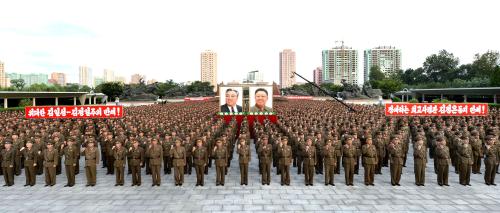

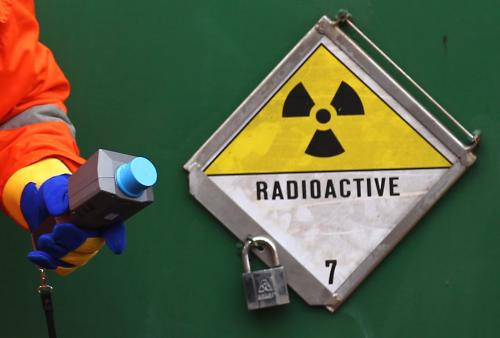
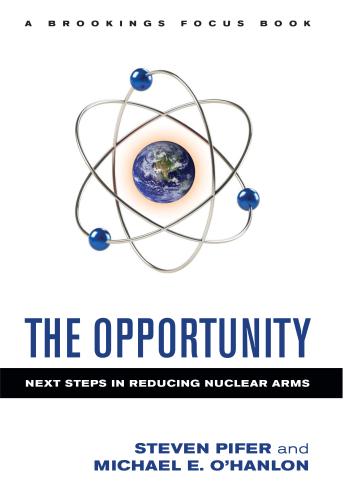
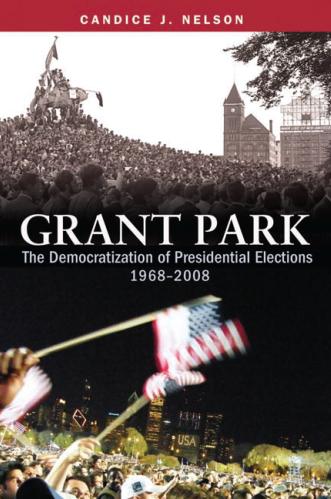
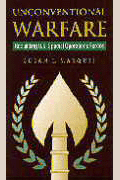


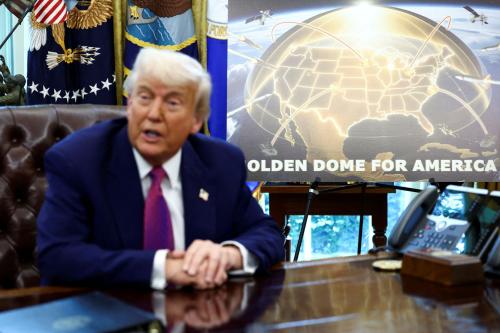
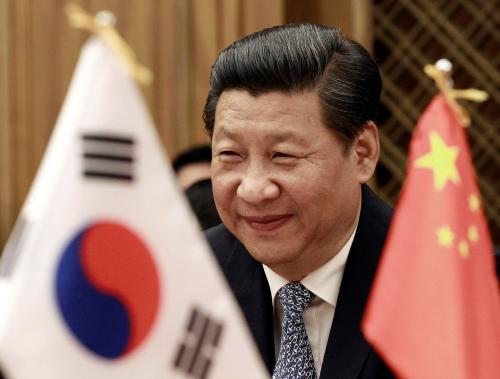
Commentary
The key choices now facing the Biden administration on North Korea
March 30, 2021